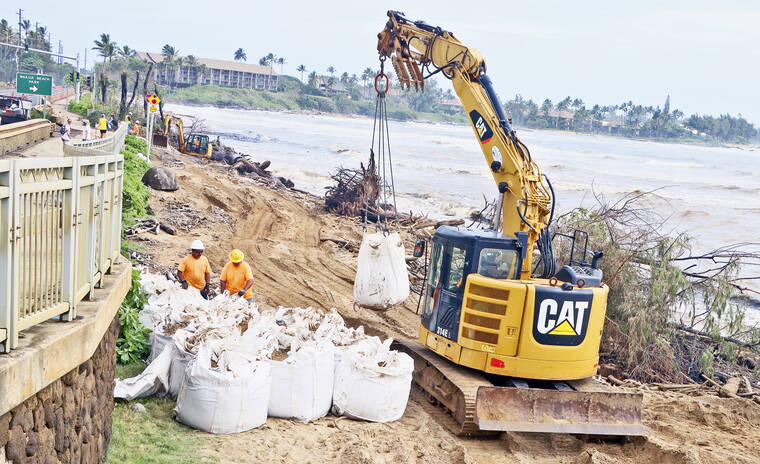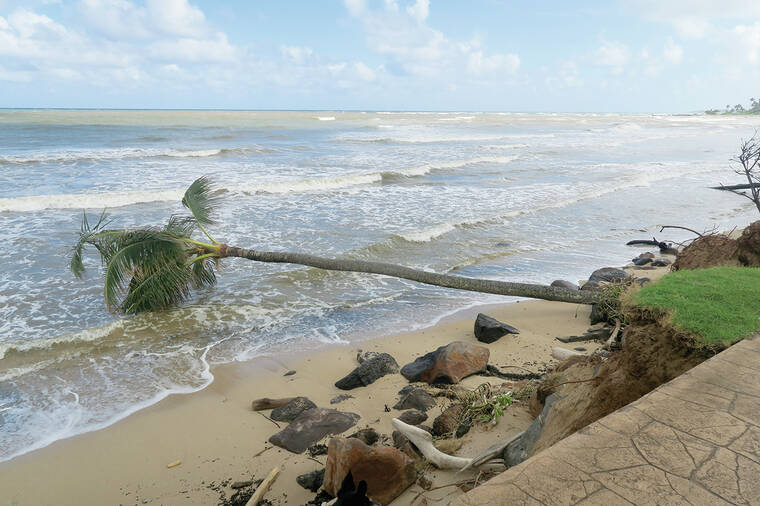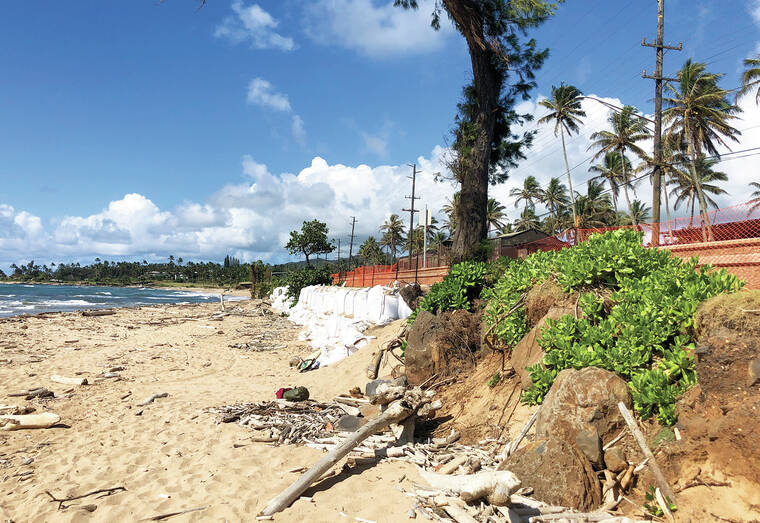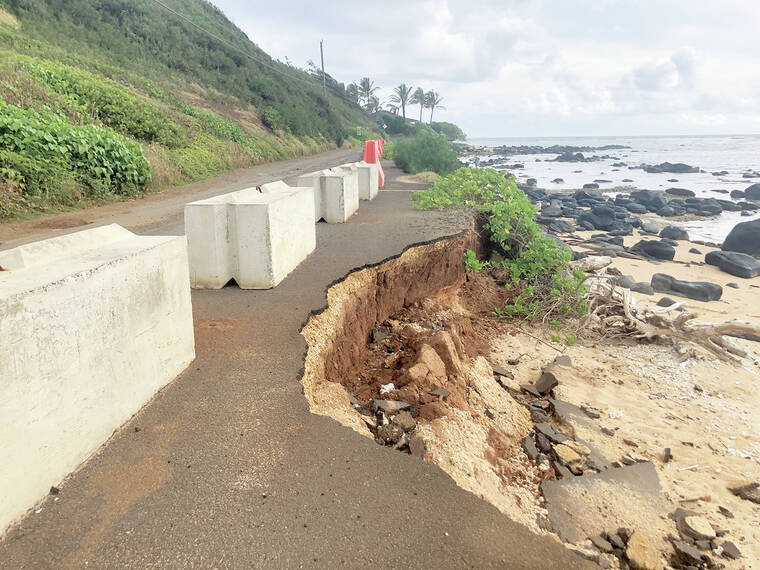LIHU‘E — A groundbreaking plan aimed at regulating construction based on future sea level rise projections will now dictate the way in which the building industry moves forward on Kaua‘i.
Bill No. 2879, which amends construction-design standards to incorporate sea level rise impacts, was signed into law by Mayor Derek Kawakami on Friday, Oct. 14, in a ceremony at Lihu‘e Civic Center Mo‘ikeha Building rotunda.
The signing of the bill makes Kaua‘i one of the first counties in the United States to regulate construction based on future sea level rise projections. The model used to project sea level rise flooding was developed by the Climate Resilience Collaborative, a research program at the University of Hawai‘i at Manoa led by leading sea level rise scientist Dr. Chip Fletcher.
“Today is truly a historic day as I sign this bill into law. We are grateful to our Planning Department and the University of Hawai‘i at Manoa’s Climate Resilience Collaborative for their collective work on this progressive measure,” said Kawakami in a statement on Oct. 14.
“Kaua‘i is no stranger to the impacts of climate change, as we’ve seen in the floods of 2018 and the recent historic south swell and king tides in July, which resulted in further damage. This new ordinance ensures that the inevitable effects of coastal erosion and flooding are determining factors in the future growth and development of our island,” said Kawakami.
The law updates the Constraint Sea Level Rise District in the Comprehensive Zoning Ordinance. As a result, it will require that the lowest floor of any new dwellings in the district be raised 2 feet above the highest sea level rise flood elevation, as projected by a scientific model.
New, non-livable buildings need to be raised 1 foot above the flood-elevation projection. This differs from other sea level rise regulations, which tend to rely on historical data rather than future models.
“I want to thank the Planning Department and its leadership for this first-of-its-kind landmark policy that will also help other municipalities as a model to better prepare for our future,” said County Council Vice Chair Mason Chock, who also serves on the council Planning Committee, in a statement.
“Government is often known to be reactive, so it’s nice to see a proactive approach from Kaua‘i County,” said Chock.
The regulations also apply to significant rebuilds of existing structures, where the total cost equals or exceeds 50 percent of the market value of the building.
“Living on a small island in the middle of the Pacific Ocean, there’s no ignoring the threat of climate change on our natural and built environments,” said Ka‘aina Hull, county planning director, in a statement.
“This bill is a result of years of hard work and collaboration, and sets a new standard for planning policies, which previously have been based solely on historical data and events. We’re incredibly grateful to all involved in this groundbreaking effort that will propel Kaua‘i toward a more secure and resilient future.”
Aside from Boston, Massachusetts, Kaua‘i is the only municipality in the country to regulate construction based on future projections for sea level rise. Hull previously estimated the area included in the regulations made up 3-4 percent of the island.
Information on which areas are at risk of sea level rise can be seen on a map viewable at https://tgilinks.com/3eair5f.
•••
Wyatt Haupt Jr., editor, can be reached at 808-245-0457 or whaupt@thegardenisland.com. Staff writer Guthrie Scrimgeour contributed to this report.






That is called adapting. Good idea. The picture next to ocean is erosion not ocean rising. The ocean as hardly risen in the last 100 yrs or more.
Considering KAUAI County is the 1st of other US counties subject to flooding to pass legislation against climate change, that is sea level rise, our council must be so proud of themselves, to be first to force new buildings’ first floors to be at least something like 3 1/2’ above sea level, well if you raise the new buildings but not the Highway or the older buildings, that means the Highway, e.g.,in Kapaa and Hanalei and Waimea, would be left underwater, and all the buildings and Highway would not only be inundated by water but also subject to wave action passing on top of the water especially twice a day during high tides.
It may have been better to follow the majority of other state and counties worldwide in their wisdom of such matters then to have to next require safe boat dock facilities at each coastal building when people will have to paddle in by boat or surfboard over the flooded highway to get to home, work, or shopping, etc.
Isn’t that what they call rush to judgement. Perhaps building dikes like Holland is another solution consideratin.